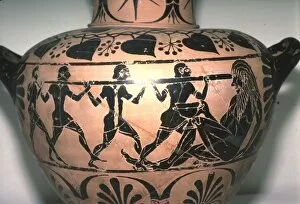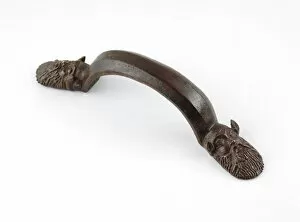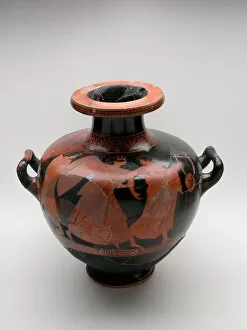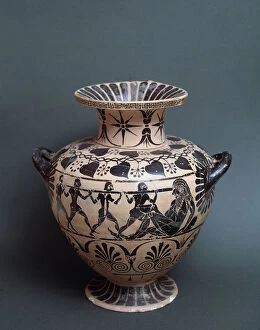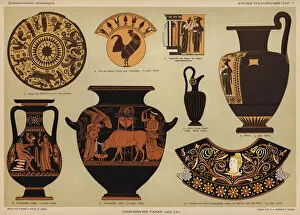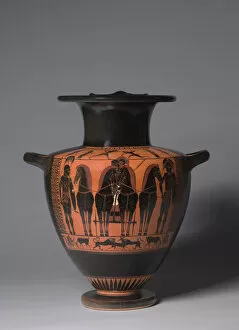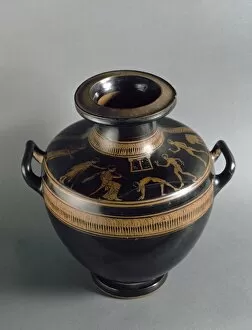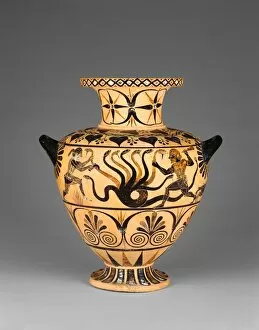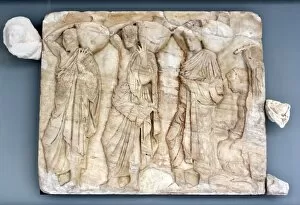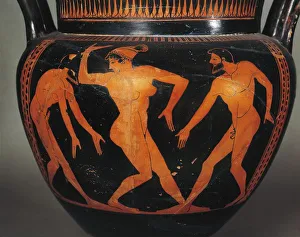Hydria Collection
The hydria, a Greek vase commonly used as a water jar or mixing jar, has been an enduring symbol of ancient art and culture
All Professionally Made to Order for Quick Shipping
The hydria, a Greek vase commonly used as a water jar or mixing jar, has been an enduring symbol of ancient art and culture. Dating back to the late Archaic period from c530BC-c510BC, these vessels have captivated historians and art enthusiasts alike with their intricate designs and historical significance. One notable depiction found on a handle from a the Blinding of Polyphemus. This mythological scene portrays Ulysses blinding the Cyclops, showcasing the prowess and cunning of the hero. Created by an unknown artist in the 5th century BCE, this artwork serves as a testament to the storytelling abilities of ancient Greece. Throughout history, various artists have left their mark on hydrias. The Orchard Painter's creation from 480-470 BCE showcases delicate floral motifs that add elegance to this utilitarian vessel. Similarly, the Leningrad Painter's work from 470-460 BCE features bold geometric patterns that highlight their artistic skill. As time progressed into the Classical period around 360-350 BCE, artists like Iliupersis Painter embraced more narrative themes in their hydrias. Their piece depicts scenes from Troy's fall during the Trojan War—an event known as "Iliupersis. " This shift towards storytelling demonstrates how these vases evolved beyond mere functional objects. The Chicago Painter's hydria dating back to about 450 BCE exhibits exceptional craftsmanship through its detailed figures and ornate borders. Meanwhile, Leagros Group's creation from about 515-500 BCE showcases stunning black-figure technique combined with mythical creatures such as griffins—a true testament to Greek mythology's influence on art. Even though some creators remain unknown throughout history—such as those behind pieces dated between 400-350 BCE or approximately 300 BCE—their contributions are no less significant. These anonymous craftsmen continued traditions while adding unique touches that make each hydria a work of art.

